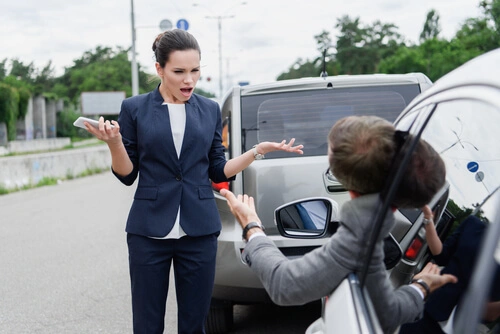Inference Stacking is Allowed in Recent Injury Case

Pretend that you are driving on the highway. You see a man standing by a pickup truck on the side of the road. His truck has work materials in the truck bed. He is looking to the middle of the road. You look to see what it is that the man is looking at. You realize that he’s looking at a large ladder. Before you can react, your car slams into that ladder, causing injury to you. After your accident, the man by the truck leaves.
Is the man in the pickup truck on the side of the road liable for your injuries? The answer may be more complex than you think.
Common Sense and Inferences
As a matter of common sense, you (and the jury in your injury trial) can assume that the ladder belonged to the man. He’s standing there looking at it and his truck is full of work materials.
However, you don’t know for a 100% fact that the ladder belongs to him. All a jury can do is infer that the ladder was his, and was once in his truck. This is an inference because nobody actually ever saw the ladder in his truck (or fall out of it).
Is the man negligent? A jury can infer that allowing a ladder to fall out of a truck bed into the middle of the road is negligent. However, nobody actually saw the ladder fall, and nobody knows how it fell out. The man in the truck could have been rear ended himself. The ties that secured the ladder could have been defective–in other words, the ladder could have fallen through no fault of the truck driver.
Stacking Inferences
This is the difficulty with this case, which is based on a real legal case: In finding the driver negligent the jury is being asked to stack inferences. First, the jury must infer the ladder belonged to the man, and then infer that the man negligently allowed it to fall out.
Although a jury can use circumstantial evidence (and common sense) to infer a fact, stacking inferences– inferring something from an inferred fact–is not allowable. However, in some cases (often in cases where debris or an item is on a roadway), so long as the inferences are reasonable, a court will allow the inferences to be stacked.
Inferences Found Reasonable
In this case, the court found that it was a reasonable inference that the ladder belonged to the man in the truck. Furthermore Florida law requires that trucks secure their loads. Although the ladder may have fallen because, for example, the ties that held it down were defective, it is still a jury’s call as to what they feel is reasonable, and it was reasonable to believe that the man in the truck was liable by allowing the ladder to remain in the middle of the road.
The Tampa personal injury attorneys at The Pawlowski//Mastrilli Law Group can answer your questions and help you obtain damages for injuries sustained in a car accident. Reach out to us today for questions and to get help.
Resource:
1dca.org/content/download/421832/4557509/file/172237_1284_12102018_09442700_i.pdf










